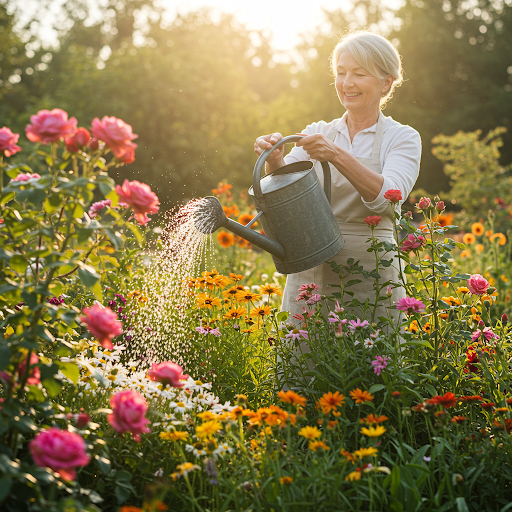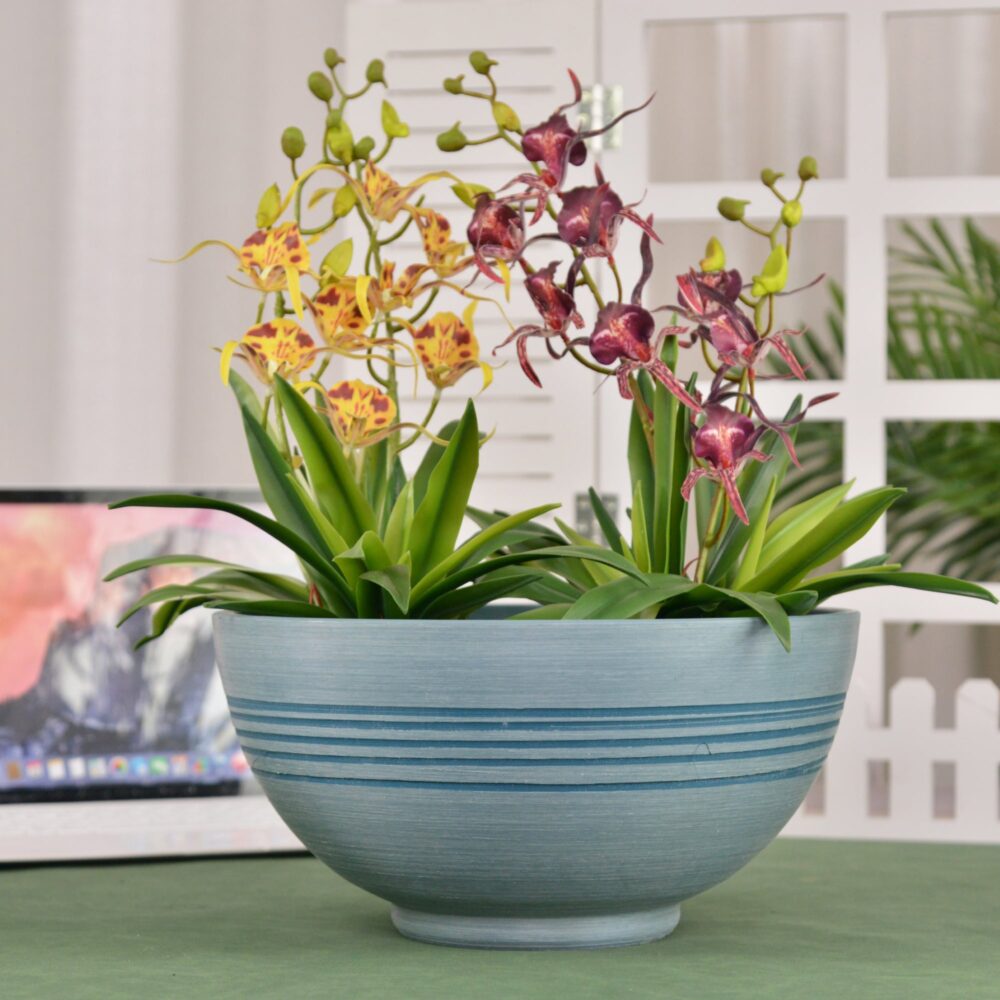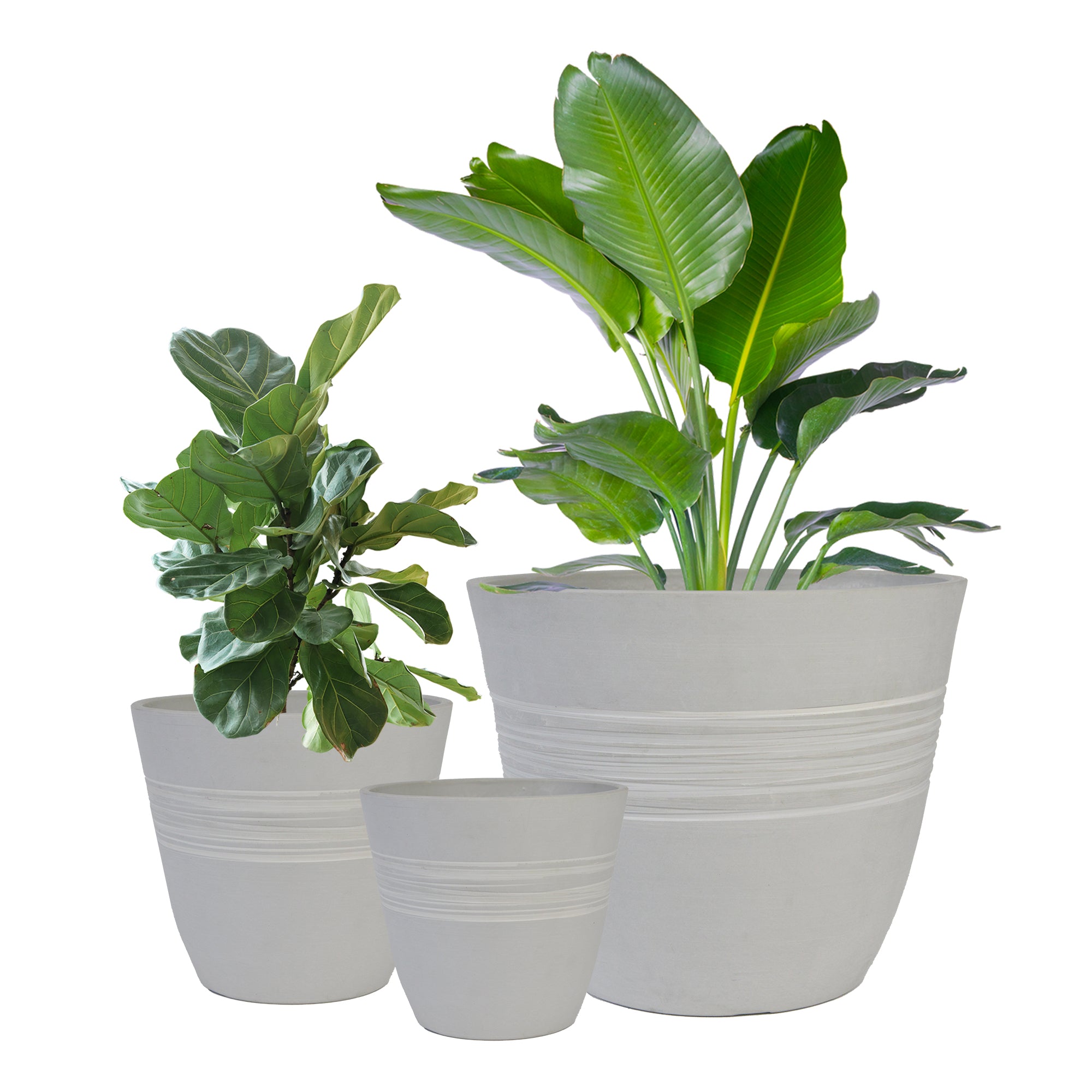How Often Should I Water My Plants in Planters? A Guide to Keeping Your Greenery Hydrated
Knowing when and how much to water your plants in planters is a fundamental aspect of successful gardening. Unlike plants in the ground, container plants have a limited supply of soil and are more susceptible to drying out quickly. There’s no one-size-fits-all answer to “how often,” as watering frequency depends on a variety of factors. This guide will help you understand these factors and provide practical tips for keeping your potted plants perfectly hydrated.
Key Factors Influencing Watering Frequency in Planters:
Several elements play a crucial role in how often your plants in planters will need watering:
- Type of Plant: Different plant species have vastly different water requirements. Succulents and cacti, for example, need very little water compared to tropical plants like ferns or peace lilies. Research the specific needs of each plant you are growing.
- Climate and Season: Hot, sunny, and windy weather will cause soil to dry out much faster than cool, cloudy, or humid conditions. You’ll likely need to water more frequently during the summer months or in drier climates.
- Type of Planter:
- Terracotta pots: These porous pots allow for more evaporation, so plants in terracotta tend to dry out faster than in non-porous containers.
- Plastic or glazed ceramic pots: These retain moisture longer, so you’ll generally need to water less frequently.
- Size of the Planter: Smaller pots hold less soil and dry out more quickly than larger pots.
- Type of Soil: Well-draining potting mix will dry out faster than denser soils that retain more moisture.
- Plant Growth Stage: Actively growing plants, especially during flowering or fruiting, often require more water.
- Humidity Levels: Higher humidity can reduce the rate of water evaporation from the soil.
- Sunlight Exposure: Plants in direct, intense sunlight will transpire (release water vapor) more quickly and need more frequent watering.

General Guidelines (Keep in Mind These are Starting Points):
While specific needs vary, here are some general guidelines to consider:
- Most houseplants: Often need watering every 1-2 weeks, but this can fluctuate greatly.
- Succulents and cacti: Typically need watering every 2-4 weeks, or even less frequently, allowing the soil to dry out completely.
- Annual flowers in sunny locations: May need daily watering, especially in hot weather.
- Vegetables in containers: Often require more frequent watering, potentially daily, especially when they are fruiting.
The Best Way to Determine When to Water: The “Finger Test”
Instead of relying on a strict schedule, the most reliable way to know when to water your plants in planters is to check the soil moisture directly:
- Insert your finger: Gently push your finger about 1-2 inches deep into the soil near the base of the plant.
- Feel the soil:
- Dry: If the soil feels dry to the touch at that depth, it’s likely time to water.
- Slightly Moist: If the soil feels slightly damp, it’s generally okay to wait a day or two before watering.
- Wet or Soggy: If the soil feels wet or muddy, it means there’s still plenty of moisture, and you should hold off on watering to avoid overwatering.
Other Ways to Check Soil Moisture:
- Moisture Meter: These inexpensive devices can be inserted into the soil to provide a reading of the moisture level.
- Lifting the Pot: Over time, you’ll get a feel for the weight of your pot when it’s adequately watered versus when it’s dry. A lighter pot usually indicates it’s time to water.
- Observing the Plant: Wilting leaves can be a sign of both underwatering and overwatering. Check the soil moisture to determine the cause. Drooping can also indicate a need for water.

Tips for Watering Plants in Planters Effectively:
- Water Thoroughly: When you do water, water deeply until you see water draining from the bottom of the pot. This ensures the entire root ball is moistened.
- Water at the Base: Avoid splashing water on the leaves, especially for plants prone to fungal diseases. Water directly at the base of the plant.
- Adjust Seasonally: You’ll likely need to water more frequently during the warmer, sunnier months and less often during cooler, cloudier periods.
- Consider Self-Watering Planters: If you struggle with consistent watering, self-watering planters can be a great option as they provide a reservoir of water that the plant can access as needed.
- Don’t Follow a Strict Schedule Blindly: Always check the soil moisture before watering, even if it’s “watering day” on your calendar.
Conclusion: Observe Your Plants and Their Environment
The frequency with which you should water your plants in planters is not a fixed rule but rather a dynamic process influenced by numerous factors. By understanding these factors and, most importantly, by regularly checking the soil moisture, you can provide your plants with the optimal amount of hydration they need to thrive. Pay attention to your plants, their environment, and the feel of the soil, and you’ll become a pro at keeping them happy and healthy!
HS
By greenship|2024-08-13T06:45:17+00:00August 13, 2024|Categories: Hand-carving Series|
20VD
By greenship|2024-08-13T06:43:41+00:00August 13, 2024|Categories: Hand-carving Series|
13 inch Planter for Indoor Plants, Set of 2 Modern Decorative Plant Pots with Drainage Hole, Cute Bowl Shape Flower Pots
By greenship-seo|2025-04-10T07:41:46+00:00January 10, 2025|Categories: Hand-carving Series|Tags: Decorative Flower Pots, Self-Watering Pots|
Modern Plant Pots with Drainage – Indoor & Outdoor Use (6″ Widths)
By greenship-seo|2025-04-10T06:29:43+00:00February 6, 2025|Categories: Hand-carving Series|Tags: Decorative Flower Pots|
Plant Pots 6 inch 8 inch 12 inch for Indoor Outdoor Plants, Set of 3 Modern Decorative Planter with Drainage Hole, Decorative Flower Pots
By greenship-seo|2025-04-10T06:38:40+00:00January 16, 2025|Categories: Hand-carving Series|Tags: Decorative Flower Pots|
KC3-14A
By greenship|2024-08-16T06:26:30+00:00August 16, 2024|Categories: Hand-carving Series|






